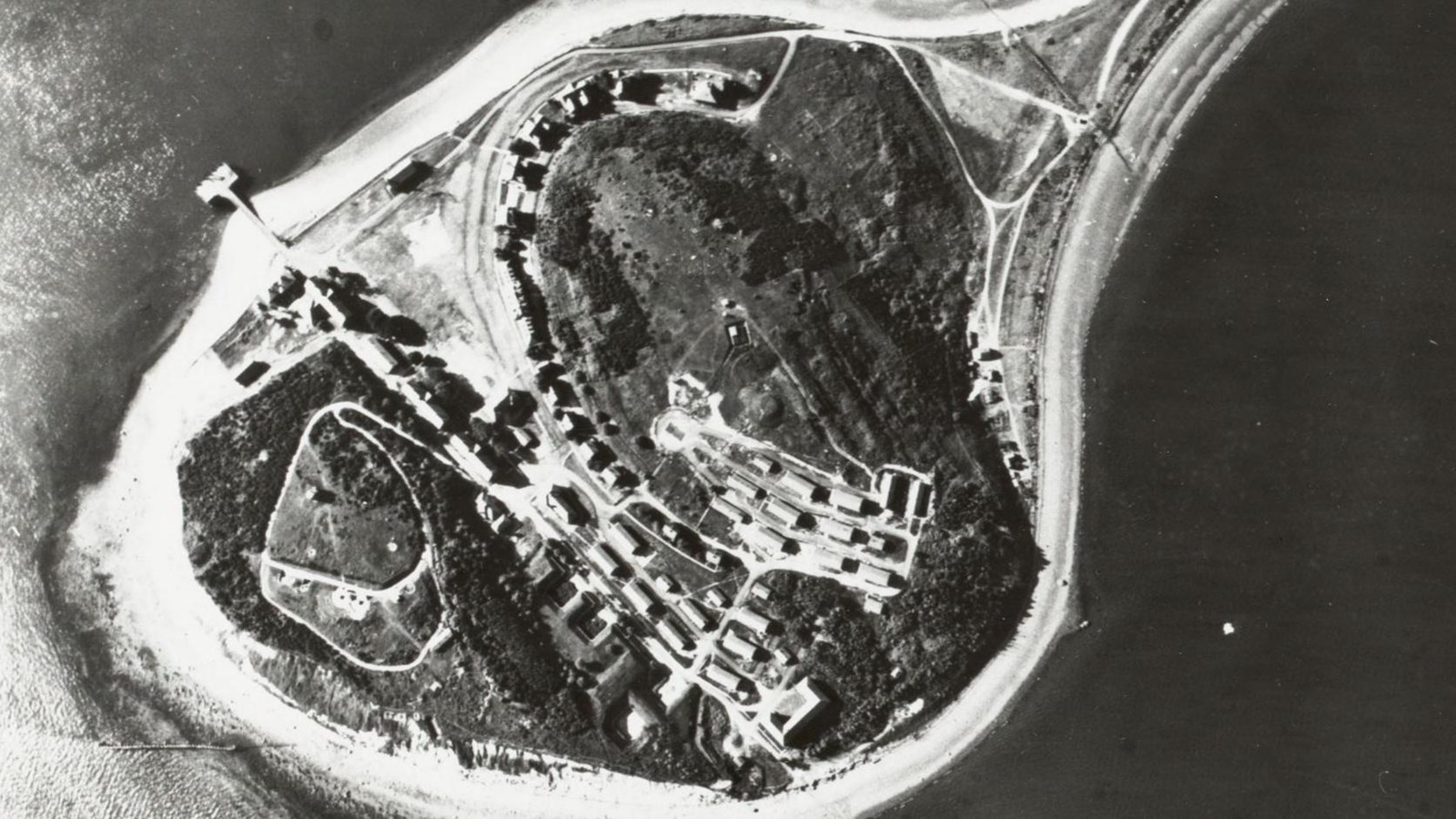Last updated: January 16, 2025
Place
Fort Andrews

Boston Public Library
Constructed at the beginning of the 1900s and active throughout both World Wars, Fort Andrews on Peddocks Island served as a key component of Boston Harbor’s defense system.
In 1886, a federal commission known as the Endicott Board investigated Boston Harbor’s defenses and found them to be out of date. During the Spanish-American War of 1898, the US Army broke ground on a new fort on East Head of Peddocks Island. The construction of the Fort displaced the inhabitants of East Head. A Portuguese fishing community, established on East Head since the late 1880s, had to move southeast to Middle Head.
The Army named the new installation Fort Andrews, in honor of Civil War General George Leonard Andrews. By the time the Fort became active in 1904, its defenses had consisted of five batteries protected by fortified concrete casemates. Each battery was named after a Civil War officer. Batteries Cushing and Whitman held twelve-inch mortars, while Batteries McCook, Rice, and Bumpus housed coastal defense guns. Several buildings, including a bakery, gymnasium, and chapel, serviced the Fort’s garrison of 400 soldiers.
By the time the United States had entered World War I in 1917, the defenses of Fort Andrews were already nearing obsolescence. The rapid technological innovation of the war showcased the military power of aircraft, submarines, and long-range artillery. As a result, Fort Andrews transitioned from a coastal defense installation to a training ground for soldiers bound for Europe. One training exercise on the island saw soldiers dig an elaborate system of trenches that mirrored those on the Western Front. The Army also dismounted several of the Fort’s guns for service overseas, though many were never returned to the island.
Life at Fort Andrews was quiet throughout the 1920s and 1930s. In 1928, the Army placed the Fort on caretaker status, leaving only four service members to staff the Fort throughout the next decade.
In 1940, with war raging in Europe and Asia, the Army reactivated Fort Andrews for coastal defense. Besides acting as a defense installation, Fort Andrews served another wartime purpose. Between 1944 and 1945, 1,300 members of the Italian Service Units lived and worked on Peddocks Island. Following Italy's armistice with the Allies in 1943, the US Army no longer considered these Italian prisoners of war as enemy combatants. They did paid, war-related work while also mingling with the island's civilian population, which included a large number of Italian-Americans.
After World War II, the Army saw little use for Fort Andrews and the other Boston Harbor fortifications (Fort Warren, Fort Strong, Fort Dawes, Fort Duvall, Fort Winthrop, Fort Independence, Fort Revere). The Fort was once again placed on caretaker status in 1947 and decommissioned shortly after. Various parties purchased the Fort's property at auction in the 1950s. The Commonwealth of Massachusetts acquired the entirety of Peddocks Island in 1970, turning the island into a public park. To this day, some buildings and batteries are still standing, reminding visitors of the Fort's role in defending Boston Harbor for half a century.
Contributed by: Raphael Pierson-Sante, SCA Historic Preservation Corps Crew Member
Sources:
Stanton, Cathy, Ph.D. A Place of Quiet Adventure: An Ethnographic Study of The Peddocks Island Cottages. University of Massachusetts - Amherst, 2016.
Cultural Resource Inventory: Peddocks Island. Boston: National Park Service, 2021.
Olmstead Center for Landscape Preservation, Cultural Landscape Report: Volume 1: Historical Overview. Boston: National Park Service, 2017.
